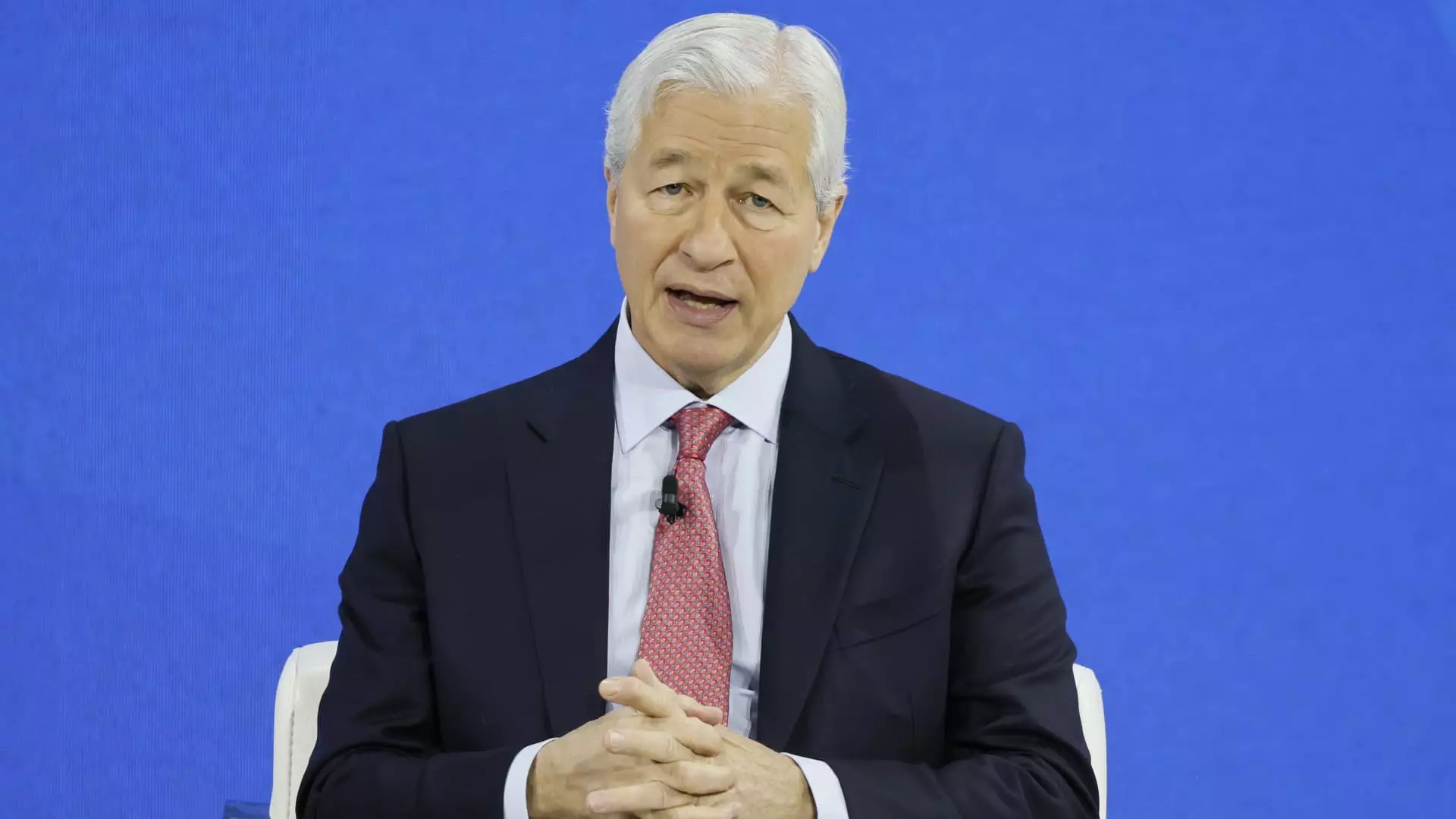In a world where predictions are often fraught with uncertainty, JPMorgan Chase managed to surpass expectations in its third-quarter results for 2023. The financial giant reported an earnings per share of $4.37, considerably above the anticipated $4.01, and recorded revenues of $43.32 billion, exceeding estimates by nearly $2 billion. Such performance, albeit impressive, was juxtaposed against a backdrop of rising geopolitical tensions and regulatory pressures, underscoring the complexity of the financial landscape in which the bank operates.
Despite a 2% decline in profit compared to the previous year—amounting to $12.9 billion—JPMorgan’s revenue growth of 6% reflects robust operational prowess. This growth was particularly driven by net interest income, which rose to $23.5 billion, surpassing the $22.73 billion forecast. These figures exemplify the bank’s capacity to adapt and thrive in a fluctuating economic environment, especially through its strategic investments in securities and its expanding credit card portfolio.
CEO Jamie Dimon’s commentary reveals a dual focus: celebrating the bank’s strong quarter while acknowledging the broader systemic challenges facing the financial sector. His call for a reassessment of existing banking regulations highlights a crucial point: the balance between promoting a resilient financial ecosystem and avoiding stifling economic growth. Dimon’s assertion that current measures could lead to “undue consequences for the economy” resonates strongly in light of the increasing burdens placed on banks by regulatory bodies.
The implications of Dimon’s statements suggest a desire for a more nuanced approach to regulation, one that takes into account both market stability and the potential for growth. As geopolitical risks escalate, the banking sector must remain vigilant and responsive, ensuring that economic fundamentals are not compromised in the quest for compliance.
JPMorgan’s third-quarter results were bolstered significantly by its Wall Street division, where investment banking fees soared by 31% to $2.27 billion, presenting a marked improvement over previous estimates. This aspect of the bank’s operations illustrates the critical role that investment banking plays in its overall profitability, particularly in turbulent economic climates that may push corporate entities to seek capital and strategic guidance.
Moreover, trading revenues showed resilience, with fixed income trading generating stable revenues of $4.5 billion, while equities trading experienced a notable jump of 27% to $2.6 billion. Such figures are indicative of a well-performing trading desk that has capitalized on market volatility—an advantage in uncertain economic conditions.
While many metrics painted a picture of success, one area of concern was the company’s provision for credit losses, which reached $3.1 billion, slightly above expectations. This rise can be partially attributed to increased charge-offs and a proactive approach to building reserves for potential future losses. Notably, CFO Jeremy Barnum emphasized that these provisions do not stem from a weakening consumer base but rather from strategic growth in the bank’s credit card lending operations.
This perspective offers a glimmer of optimism, suggesting that consumer confidence remains relatively intact. The bank’s approach to credit card loan expansion indicates an industry-wide tension: while lenders are eager to grow, they must also navigate the intricacies of potential default risks amidst shifting economic conditions.
Future Outlook: Navigating Rate Changes
As the Federal Reserve begins to adjust interest rates, questions loom over how JPMorgan will adapt. The rising rates have yielded historical net income figures since 2022, yet with impending rate cuts, there is a forecasted squeeze on profit margins. Even with a raised guidance for net interest income, projected at $92.5 billion for the fiscal year, analysts note that this silver lining may be short-lived.
Barnum’s description of the third-quarter outperformance as a “blip” indicates a cautious optimism. It highlights the unpredictability inherent in the banking sector, underscoring that while JPMorgan has weathered recent economic storms, the future will require adaptability and strategic foresight. As the institution continues to leverage its strengths, stakeholders will be closely watching how it faces the dual challenges of regulatory obligations and a changing economic environment.
While JPMorgan Chase’s recent performance reveals both triumphs and tribulations, the complexities of the financial environment reinforce the need for agility and a careful assessment of future risks. As the dust settles from the third quarter, both investors and regulators alike will keep a watchful eye on the decisions that will shape the bank’s trajectory in the months and years to come.


Leave a Reply